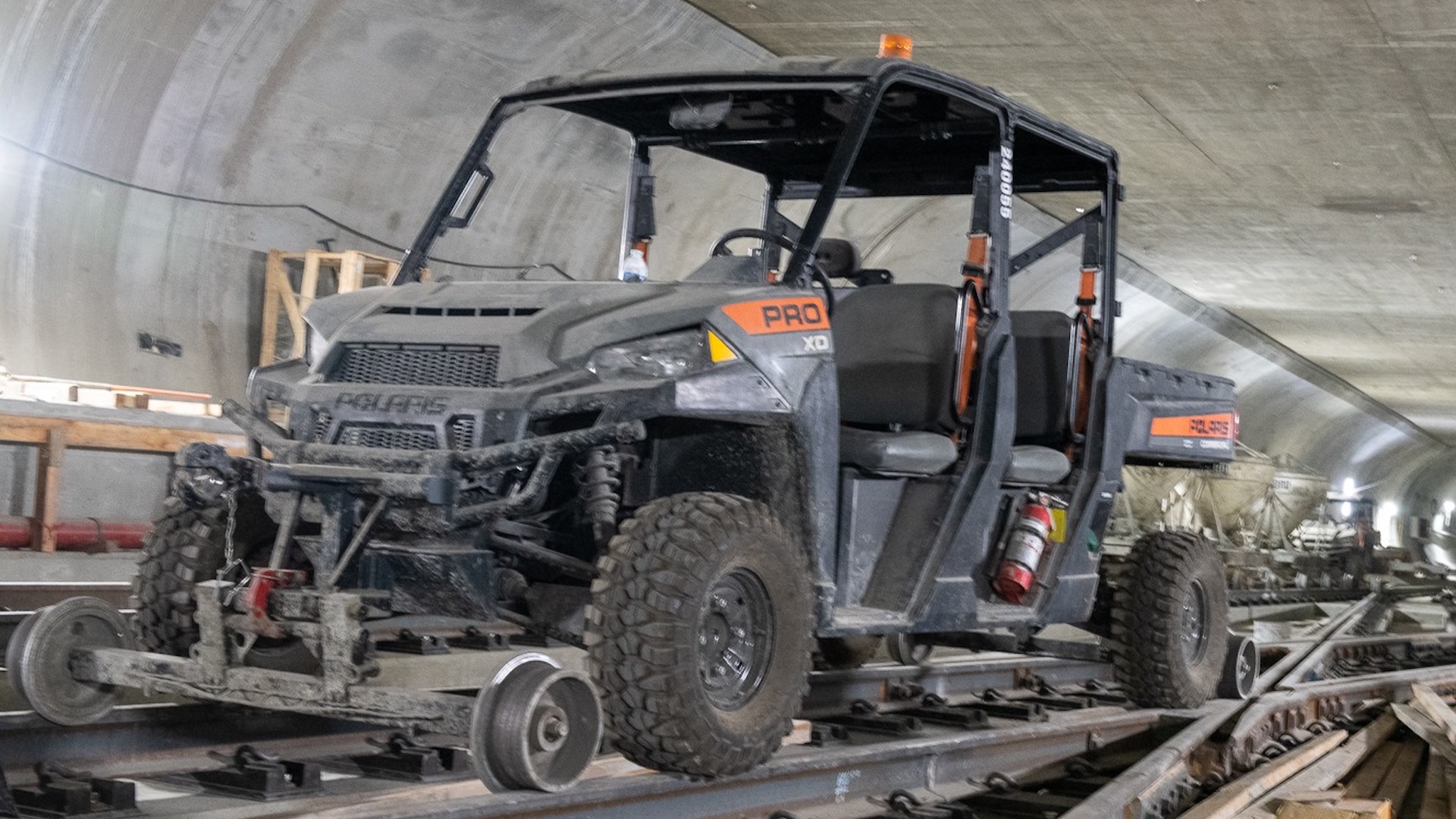

Every railroad faces unique operational challenges, and such needs sometimes require unique, specialty vehicles to keep the wheels greased. In New York, there are locomotives with rail-searing lasers. California still relies on frightening, nearly century-old rotary snow plows to carve through mountain drifts. And underneath Los Angeles, in the tight confines of the Metro’s subway tunnels, there is a small, capable, flexible vehicle for track maintenance: A Polaris side-by-side with train wheels.
Cameoed in one of Metro’s Facebook posts, this Polaris is what’s known as a high-rail—a vehicle capable of traveling safely on both roads and train tracks, just like Germany’s strange Schi-Stra-Bus. It does this by lowering two axles with flanged, free-spinning train wheels of the same gauge as the Metro’s tracks. Because the LA Metro uses the globally adopted standard gauge of 1,435 millimeters, this Polaris can theoretically be operated on many railroads around the world (though don’t get any funny ideas).

Unfortunately, there’s not much official information to go off of. It doesn’t look like those train wheels are powered, which leads me to believe this Polaris uses its regular, rubber-tired wheels to move. And if I’m correct in identifying this Polaris as a Pro XD 4000, that’d mean it’s all-wheel-drive, and powered by either an 898cc, 24.5-horsepower, three-cylinder diesel or a 1.0-liter, 39-HP gas engine, the latter of which can push it up to 40 mph. Before you ask, no, these are still far from the smallest combustion engine ever fitted to a railed vehicle.
Though not nearly as powerful as a real locomotive, this Polaris hi-rail is presumably still capable of light maintenance duties—transporting personnel, tools, and maybe even construction materials. It has, after all, seats for four, a maximum payload of 2,075 pounds, and a tow rating of 2,500 pounds. Sounds like just enough to justify adding a trailer, though it might be hard finding one that matches.
Got a tip or question for the author? You can reach them here: james@thedrive.com